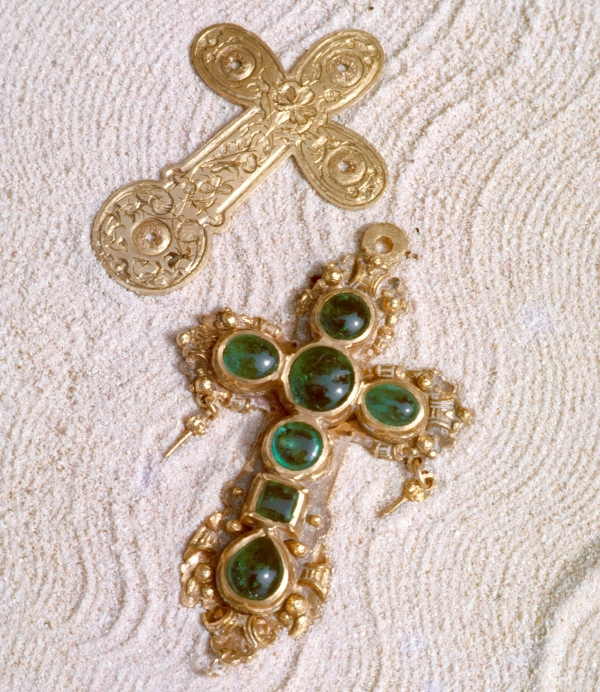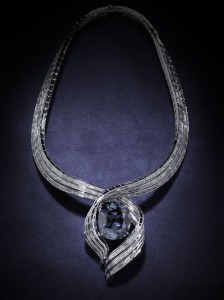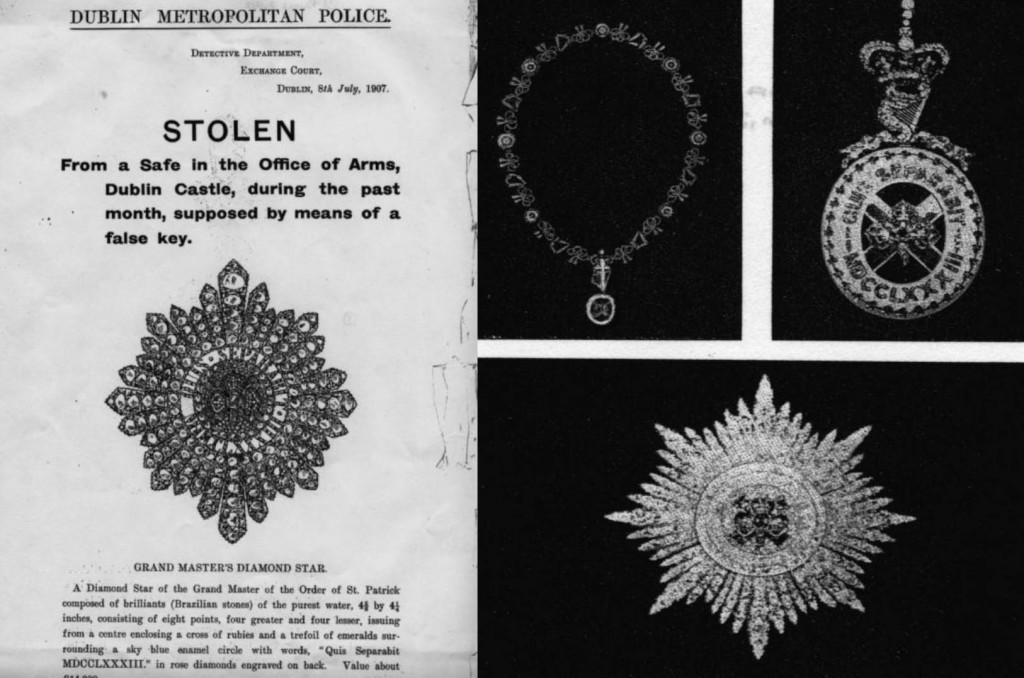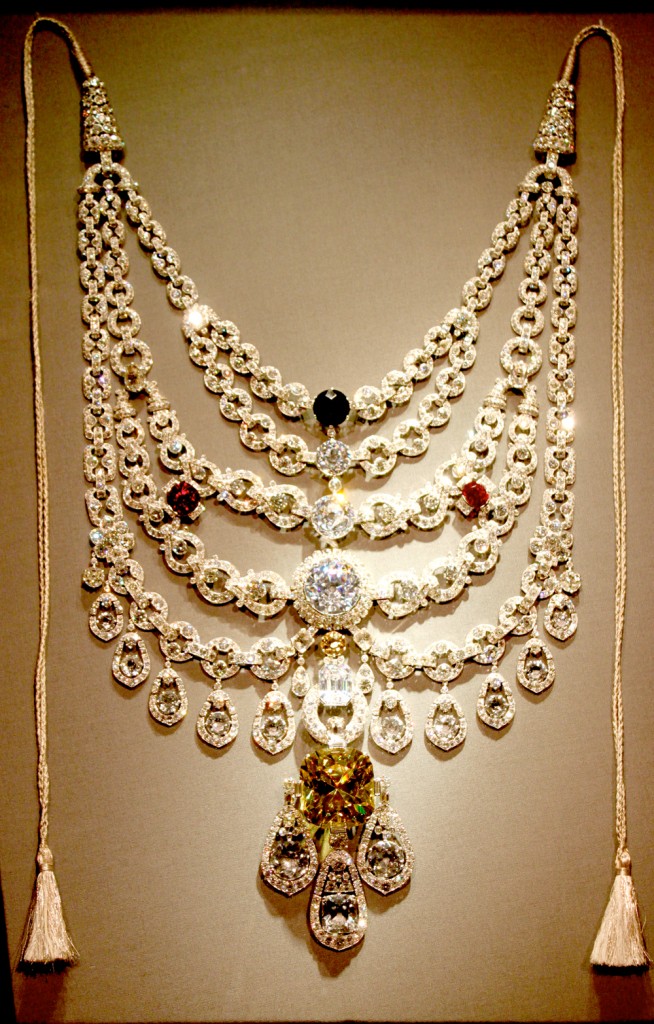5 Most Expensive Stolen Jewelry
Gems and jewels are all around us since the age of time, so is stealing and theft. Through different eras, a lot of heists has been recorded – and here, we give you the list of the all-time most expensive stolen jewelry across the globe.
#1 The Irish Crown Jewels
This stolen jewelry is the heavily jeweled star and badge regalia of the Sovereign and Grand Master of the Order of St. Patrick. They were stolen from Dublin Castle in 1907 along with the collars of five knights of the Order. The theft was never solved and the jewels never recovered.
When not being worn or cleaned, the insignia of the Sovereign and those of deceased Knights were in the custody of the Ulster King of Arms, the senior Irish officer of arms, and kept in a bank vault. In 1903, the jewels were transferred to a safe, which was to be placed in the newly constructed strongroom in Dublin Castle. However the safe was too large to fit the doorway of the strongroom, and Arthur Vicars, the Ulster King of Arms, stored it in his office instead. Vicars was known to regularly get drunk on overnight duty and he once awoke to find the jewels around his neck.
The insignia was last worn by Lord Aberdeen on March 1907, it was last known to be in the safe on 11 June, when Vicars showed them to a visitor to his office. The jewels were discovered missing on 6 July 1907.
The “Irish Crown Jewels” along with the collars were valued at £31,050 of stolen jewelry.
#2 Florentine Diamond
 The Florentine Diamond is a lost diamond of Indian origin and has a light yellow color with very slight green overtones. It is cut in the form of an irregular but very intricate, nine-sided 126-facet double rose cut, with a weight of 137.27 carats. This stolen jewelry is also known as the Tuscan, the Tuscany Diamond or the Grand Duke of Tuscany.
The Florentine Diamond is a lost diamond of Indian origin and has a light yellow color with very slight green overtones. It is cut in the form of an irregular but very intricate, nine-sided 126-facet double rose cut, with a weight of 137.27 carats. This stolen jewelry is also known as the Tuscan, the Tuscany Diamond or the Grand Duke of Tuscany.
Documented history begins when Jean Baptiste Tavernier, the French jeweler and traveler, saw the stone among the possessions of Ferdinando II de’ Medici, Grand Duke of Tuscany in 1657. It then passed into the hands of the Habsburgs and at the time, it was valued at $750,000.
After the fall of the Austrian Empire during World War I, the stone was taken by Charles I of Austria into exile in Switzerland. The stone was stolen sometime after 1918 by a person close to the Imperial family and taken to South America with other gems of the Crown Jewels. After this, it was rumored that the diamond was brought into the United States in the 1920s and was recut and sold.
#3 Patiala Necklace
The Patiala Necklace was created by the House of Cartier in 1928. It was made for and named after Bhupinder Singh of Patiala, the then ruling Maharaja of the state of Patiala. It contained 2,930 diamonds, including as its centerpiece, the world’s seventh largest diamond, the “De Beers”, which had a 428 carat pre-cut weight, and weighed 234.65 carats in its final setting. The piece also contained seven other diamonds ranging from 18 to 73 carats, and a number of Burmese rubies. The necklace disappeared around 1948.
In 1982, at a Sotheby’s auction in Geneva, the necklace reappeared. There, it was sold $3.16 million.
In 1998, the missing part of the necklace was found at a second-hand jewelry shop in London by an unnamed buyer. The remaining large jewels were missing, in particular, the Burmese rubies as well as the 18 to 73 carat stones that were mounted on a pendant.
Cartier purchased the incomplete necklace and, after four years, restored it to resemble the original. They replaced the lost diamonds with cubic zirconia and synthetic diamonds, and mounted a replica of the original De Beers diamond.
#4 Tucker’s Cross
 Tucker’s Cross is an emerald-studded 22 karat gold cross discovered by Bermudian marine explorer Teddy Tucker in 1955. Its origin is believed to be the San Pedro, a Spanish galleon that wrecked in 1594. On discovery, Tucker believed the cross to be Indian made due to its simplicity. By 1997, however, it was considered to be the most valuable single object ever found in a shipwreck.
Tucker’s Cross is an emerald-studded 22 karat gold cross discovered by Bermudian marine explorer Teddy Tucker in 1955. Its origin is believed to be the San Pedro, a Spanish galleon that wrecked in 1594. On discovery, Tucker believed the cross to be Indian made due to its simplicity. By 1997, however, it was considered to be the most valuable single object ever found in a shipwreck.
Tucker sold it to the Government of Bermuda in 1959 so that it would remain on the island, and for some time it lived in a museum that Tucker and his wife ran on behalf of the Government. Subsequent to his sale of the museum for $100K, and prior to Queen Elizabeth II’s planned visit to the museum, it was discovered that the Cross had been stolen with a replica left in its place.
#5 Hope Diamond
The Hope Diamond, also known as Le Bijou du Roi (“the King’s Jewel”), is a large, 45.52-carat, deep-blue diamond that is now housed in the National Museum of Natural History in Washington, D.C. It has been described as the “most famous diamond in the world”.
 It started out as a gemstone which originated in India that was brought to Paris by Jean-Baptiste Tavernier as a large uncut 112 carats stone known as the Tavernier Blue diamond. It was sold to Louis XIV in 1668 or 1669.
It started out as a gemstone which originated in India that was brought to Paris by Jean-Baptiste Tavernier as a large uncut 112 carats stone known as the Tavernier Blue diamond. It was sold to Louis XIV in 1668 or 1669.
In 1678, Louis XIV commissioned the court jeweler to recut the Tavernier Blue and set it on a cravat-pin, resulting in a 67.125-carat stone which royal inventories listed as the Blue Diamond of the Crown of France or the French Blue.
It was then set into a more elaborate jeweled pendant for the Order of the Golden Fleece in 1749 by Louis XV. In 1792, while Louis XVI and his family were confined in the Palais des Tuileries during the early stages of the French Revolution, a group of thieves broke into the Garde-Meuble (Royal Storehouse) and stole most of the Crown Jewels during a five-day looting spree. While many jewels were later recovered, including other pieces of the Order of the Golden Fleece, the French Blue was not among them and it disappeared temporarily from history.
It was believed to have been “swiftly smuggled to London”, the exact rock known as the French Blue was never seen again as it was probably cut into two pieces, and the larger one became the Hope Diamond.
Twenty years after the theft of the French Blue, in 1812, it was recorded that the Hope Diamond is in the possession of a London diamond merchant. And was later reported to have been acquired by a rich London banker named Thomas Hope – where it came to be known as the “Hope Diamond”.
 It was then sold to different owners such as Adolph Weil, to a wealthy Turkish diamond collector, Sultan Abdulhamid of Ottoman Empire, to a Parisian jewel merchant, and even Pierre Cartier who had it reset.
It was then sold to different owners such as Adolph Weil, to a wealthy Turkish diamond collector, Sultan Abdulhamid of Ottoman Empire, to a Parisian jewel merchant, and even Pierre Cartier who had it reset.
In 2005, the Smithsonian officially acknowledged that the Hope Diamond is, in fact, part of the stolen French Blue crown jewel. The diamond was exhibited as a stand-alone gem with no setting in 2009. And in 2010, the Hope Diamond was displayed at the Smithsonian in a temporary newly designed necklace called “Embracing Hope”, created by the Harry Winston firm. In 2012, the diamond was returned to its Cartier setting.
Do you know where else to find stolen jewelry? We’ll let you in on a secret…they can be found HERE.









